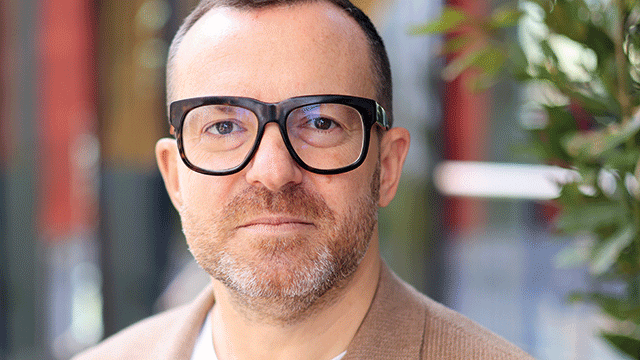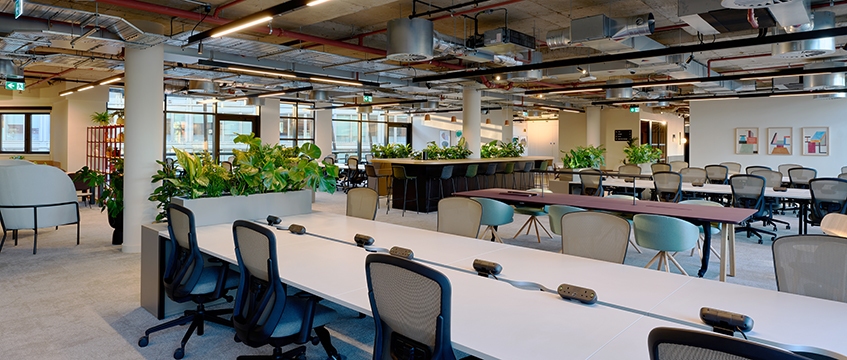Business as usual? Not if we embrace artificial intelligence
COMMENT Our property industry has largely brushed aside most of the past 50 years of technological innovation, sleepwalking through Web 1.0, Web 2.0, 3G, 5G – and lots of other things with numbers. All of which, meanwhile, have revolutionised the way we live, play, learn and work.
It has given ample fodder to the purveyors of doom who are justified in calling out the dull and obstinate property sector for being out of sync with modernity. Time is up, they say, on an asset class with its own obsession: business as usual.
Artificial intelligence is our next chance for redemption. Outside of property, the long fascination with simulating intelligence has been driven by anyone who has ever thought about thinking. And it is paying off.
COMMENT Our property industry has largely brushed aside most of the past 50 years of technological innovation, sleepwalking through Web 1.0, Web 2.0, 3G, 5G – and lots of other things with numbers. All of which, meanwhile, have revolutionised the way we live, play, learn and work.
It has given ample fodder to the purveyors of doom who are justified in calling out the dull and obstinate property sector for being out of sync with modernity. Time is up, they say, on an asset class with its own obsession: business as usual.
Artificial intelligence is our next chance for redemption. Outside of property, the long fascination with simulating intelligence has been driven by anyone who has ever thought about thinking. And it is paying off.
McKinsey research shows that more than half of senior executives across all sectors already anticipate a need to incorporate AI to deliver on their value propositions. This tops out at 81% for those in finance, down to 31% for those in consumer goods and retail (note to self: avoid buying fashion designed by AI). Some 50% of all those asked said they had adopted AI in at least one business unit. And more than half of organisations surveyed invest at least 5% of their digital budget in AI.
AI is helping slingshot us into the future. It gives us the ability to focus on more complex issues and use the power of supercharged thought to solve world issues faster, better, unbridled by the mundane. The romantic notion of a brave new world, with new jobs, new technologies, an exciting future for our children is psychologically appealing. Our humdrum work no more, replaced by new, fulfilling endeavours. We believe in this possibility because we have seen it play out before. Think about the lamp lighters or, my personal favourite, the slubber doffers. Sadly, yes; gone.
AI is already making its presence felt. We unwittingly touch the hand of AI perhaps 20 or more times a day. Facial recognition, detecting fraud on our credit card, the customer service chat bot online, the self-driving car, social media monitoring, financial markets and so much more. All already incorporate AI tools. From McKinsey’s State of AI in 2022, 32% of businesses have found costs are down because of AI, and 63% have showed increases in revenue.
Change is coming
How will AI affect our built environment? I’m not sure I buy into the idea that it heralds the apocalyptic conclusion of all white-collar jobs, but without doubt, the type and mix of jobs will change, even dramatically. As, by proxy, will things such as the kind of education we will deliver and the schools needed to deliver it, focusing on imagination not repetition. The rise in data centres and the increase in electricity we need to run them. The list is long.
Crucially, AI could be a huge positive for arresting climate change. Powered by AI, we can analyse large amounts of data from buildings and use these insights to adjust and predict all aspects of a building’s use, dramatically reducing energy consumption. At a system level, predictive utilisation can optimise not only building energy consumption but also every other connected thing, from when to run the Underground to how many bananas to order for the canteen.
This is not just theory. Researchers at Stanford University have trained and tested AI on remote-sensing and public data for almost 40,000 buildings in the UK, using Google Street View images, aerial images and satellite-based measurements of building heat loss. At FORE, we are already using AI in our buildings, for example testing out more efficient cleaning regimes led by AI-powered robots.
Within construction more broadly, AI is helping us invent new ways of building, new techniques and typologies that would otherwise be beyond our reach. Autodesk is betting heavily on AI with Construction IQ, an innovative set of tools that use machine learning and AI to analyse quality and safety data of construction projects. These factors and many more have broad implications for how we conceive our cities, buildings and spaces.
Picture this
But is that it? Bold, but it feels overly pragmatic. Workaday. A helping hand, not a leading hand. Is there more?
To experience AI directly and understand where it might be going, I had a go at ChatGPT, the real language chat AI from OpenAI. It’s clever. And fast. I asked it about what I should write in this article – and some of its words are directly included above.
We got into a discussion about why humans like Christmas so much, and even whether Santa was real (spoiler alert: AI thinks it should be “up to you”). I asked it moral questions (“is love important?”), questions about boredom and loneliness. And what it thought about a future where AI was ubiquitous, whether that was a good or bad thing. “Overall, the impact of AI on society will depend on how it is developed and used. It will be important to consider these potential benefits and challenges as we work to shape the future of AI.” Indeed.
In the end, though, I was left somewhat unsatisfied. I signed off. “It’s not you, it’s me.” “I understand,” said the bot.
Undeterred, I headed over to Discord to try out Midjourney, the AI-powered tool that creates images from what you type. It interprets your words with incredible accuracy, as if by magic. Type in “fish holding an umbrella” et voila. I get lost in this, and time disappears. After plenty of “dystopian future city overrun by nature” and “Santa with a red lightsabre fighting Darth Vader in the snow, hyper realistic” (epic!), I may have found something. “Joy,” I type. “Love.” “Purpose.”
I stare at AI’s interpretation of “purpose” for a while, a silhouetted figure walking down a long path, bordered by flowers, towards a brightly lit horizon, with a dappled blue sky and clouds that loosely look in the shape of a heart. (pictured below) It’s poignant. The cursor blinks back at me; your move, human.
And I wonder. Perhaps this could be AI’s greatest trick: to help us interpret the complexity of our moral life. Explore our own purpose, finding meaning and joy in what we do. Given this gift, how would we use it? To what end? Would we even recognise it, and accept it?
Maybe this intelligence is not so artificial after all.
Arthur C Clarke famously wrote, “Any sufficiently advanced technology is indistinguishable from magic”. It feels like we are there. And the implications not only for property but for us all may be more profound – and show up in a very different form – than we realise.
Basil Demeroutis is managing partner at FORE Partnership
Image: Midjourney. “Purpose”. 4 December 2022, 12:06:32 (courtesy of Basil Demeroutis)











